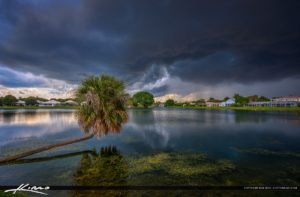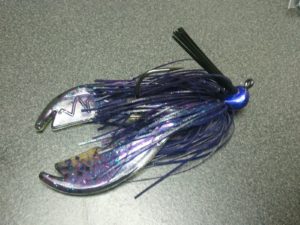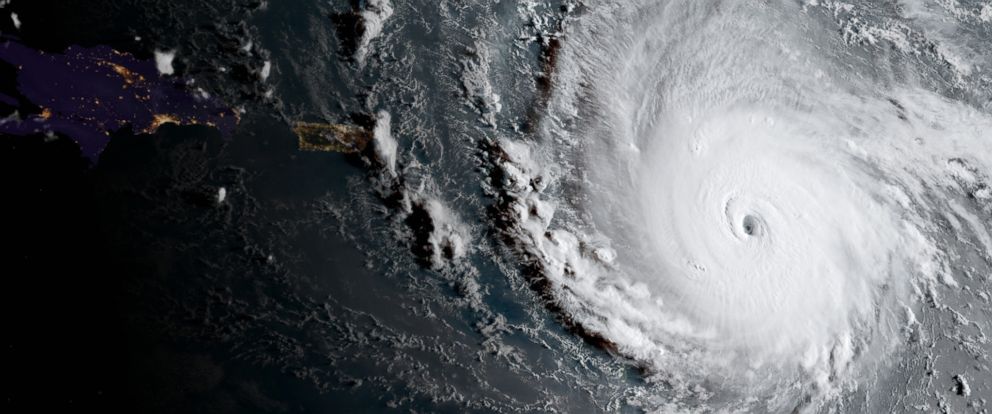With hurricane Irma on the way I’m sure many people are wondering how it will affect the bass fishing and if you’re a fishing freak like me you’re not going to let the storm stop you from fishing the week after. The two main problems that every hurricane brings are it’s extreme winds combined with extreme amounts of rain. Numerous amounts of debris will be blown into the lakes. Along with the debris, the water will be stirred heavily from the winds and will become extremely muddy. This will be at its worse on the wind blown sides (areas where the wind is blowing directly into the bank) of the lakes, and less on the sides where the wind is coming from. With all the rain the water levels will rise an unpredictable amount but this will also cool down the lakes a moderate amount.
Lets talk about how this all affects the bass and then go into how to fish it. The bass fishing will slow down significantly for the first few days after the hurricane comes through, with it steadily picking back up each day after. What will hurt the fishing the most will be the muddy water all around the lake. The fish will have a tougher time locating food but they will still need to feed. How fish adapt to these changed conditions will depend on the usual water clarity of the lake before the storm. The clearer the water was, the tougher time fish will have adjusting to the dirtier conditions. But if the water clarity was already murky before the storm the fish will not be affected much because they are already used to those conditions. With the water temperature dropping from the rain the fish will become more active after things calm down and may ever start schooling even in muddy water.
So here’s how to tackle the challenges laid before you. The first thing you want to do is find the clearest water possible, simply because those fish will be able to find your baits easier. With muddy water the fish will move shallow and will hold very tight to cover. Think of it as if you were in a room and the lights are suddenly turned off, you’re going to feel around for walls and stay close to them so you know where you’re at. This is what the bass will be doing. They are going to move shallow were they can see the bottom and also the surface, and they’ll be holding tight to whatever cover they can. The higher water levels is another reason the bass will move shallow. It’s a fishes natural tendency to explore new areas and swim into new lakes, ponds, and streams that are now available to them from the higher water levels. This is how fish are naturally able to populate new lakes and ponds with there species.
 Luckily though the muddy waters won’t last much more than a week. Once you have found an area where you believe there may be bass, work baits that are big and give off a lot of vibration and displace a lot of water and in colors that are easier for bass to see in muddy water. Such as a chartreuse or black/blue Colorado bladed spinner bait, a dark colored rat-l-trap, chartreuse or black/blue chatterbait, or for top-water, a prop bait. Work these lures SLOW and as close to cover as you can get so the bass have a chance to find and strike it. Another great technique is to flip. Pitching or flipping anything that’s big and bulky and causes a lot of commotion in the water may be the best technique in certain areas. Just flip tight to any cover you can find such as wood, weeds, grass, or bushes and give it a few small subtle twitches after it hits the bottom to give a fish a chance to strike.
Luckily though the muddy waters won’t last much more than a week. Once you have found an area where you believe there may be bass, work baits that are big and give off a lot of vibration and displace a lot of water and in colors that are easier for bass to see in muddy water. Such as a chartreuse or black/blue Colorado bladed spinner bait, a dark colored rat-l-trap, chartreuse or black/blue chatterbait, or for top-water, a prop bait. Work these lures SLOW and as close to cover as you can get so the bass have a chance to find and strike it. Another great technique is to flip. Pitching or flipping anything that’s big and bulky and causes a lot of commotion in the water may be the best technique in certain areas. Just flip tight to any cover you can find such as wood, weeds, grass, or bushes and give it a few small subtle twitches after it hits the bottom to give a fish a chance to strike.
As an alternative to artificials, live bait works great in these conditions. The fishing won’t be much different for the live bait fisherman because the shiners are alive. When they are tossed in the water there natural instincts will cause them to swim down to the cover where the bass are holding. Making for easy fishing. Live bait can be very useful for finding out exactly where the fish are holding and how active they are. This can help you figure out what to use and how to work your aritficials that day. Live bait can be a very productive tool for finding fish and can help greatly for learning to be a better artificial fisherman. I actually wrote an entire other blog on this subject called “Shiners, the secret to bettering yourself as an artificial angler” which can be found here.
All in all hurricane Irma’s affects shouldn’t last more than a week. Much of Florida’s infrastructure is built from the ground up to withstand storms and floods. With the money Florida has dumped into storm response, Florida will be back up and running in no time. Along with Florida’s fishing.
I hope this answers any questions and that everyone stays safe. If you have any other questions please message below and I will do my best to answer them.
If you enjoyed this post give it a like!
Bass wishes,
AJ Jackson from Freelance Bass Guide Service

One thought on “How hurricane Irma will affect Florida’s bass fishing”
Lake Rousseau had an oxygen deprevation from Irma. The camp I am at right now saw hundreds of trophy bass. They even tried an aerator to help but there were too many. I woulda been filling my freezers. Then then dead fish stunk for weeks. I did not see any reference to O2 loss in your article. This will affect this lake for many years.
Comments are closed.